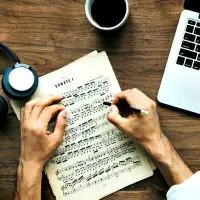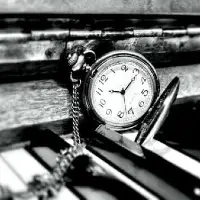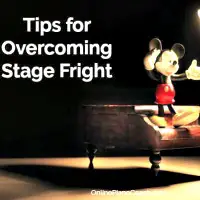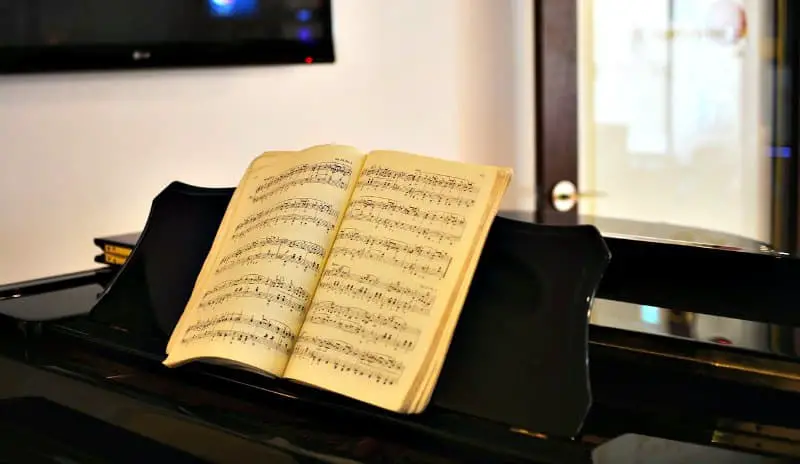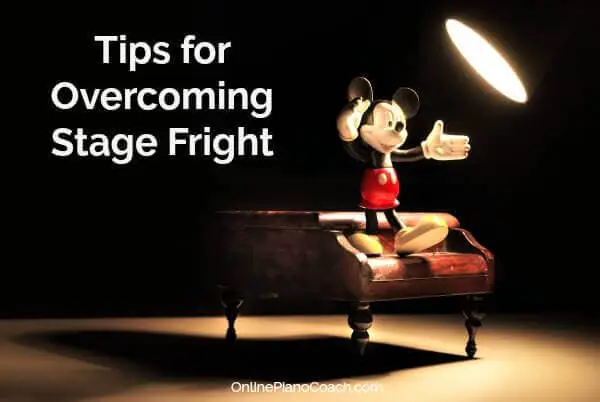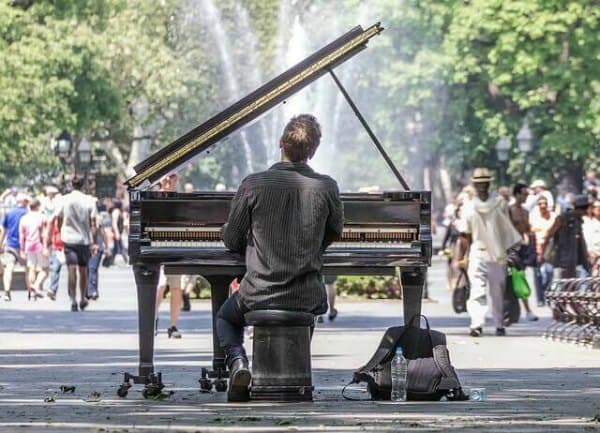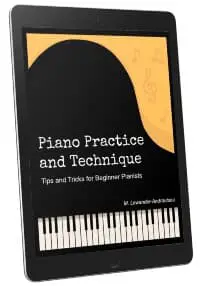- Home
- Piano Practice
Piano Practice Tips & Strategies for Adult Beginners
This article may contain compensated links. Please read the disclosure for more info.
Effective piano practice is at the core of learning how to play piano well.
"Now go home and practice." (Right....) Ever heard that expression? So annoying. You want to know: OK, how exactly? Some people can practice and get great results without learning much about how to practice, which is true. But most people don't.
Still, I notice that practicing the piano is somehow assumed to work by itself, as if every piano student was born with a "how to know how to practice" gene... Not true!
In this article, you will find many tried and tested practice ideas and strategies that are great for both beginner and more advanced pianists.
Piano Practice Tips for Adult Beginners
I want to recommend: The Musicians Way; it's a book full of great tips and plans on how to organize your practice. It has inspired me and my teaching a lot.
I didn't start learning proper piano practice techniques myself until I started teaching piano. And after more than 30 years of teaching piano, I constantly see how it's essential for all piano students to learn about effective practice routines and how to practice as early as possible.
Organizing the music and practicing in parts, working hands separately and together, slow practice, and working extra on weaker parts are basic skills when practicing. Below you'll find tons of tips.
So, discover how you can improve your practice sessions and get even better results by following these tips and exercises!
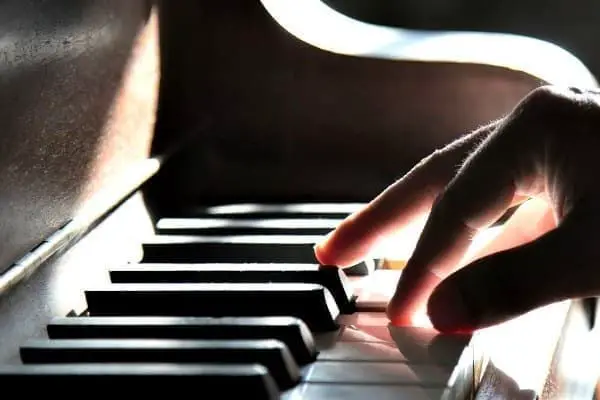 Learn How to Practice More Effectively.
Learn How to Practice More Effectively.Effective Piano Practice Strategies
6 Levels Piano Practice Plan for Beginners
Here is an easy but thorough way to structure your piano practice, especially for beginners. Taking a music piece through 6 levels of training will build security, and you'll learn the work from the bottom up.
Piano Practice Techniques for Beginners
Divide and conquer! Here you will learn effective techniques for getting through that first stage of learning the notes of a piece.
Practice Piano with Your Brain
To practice piano with good results, it's a good idea to learn more about how our analytical understanding of the music and our body movements are coordinated by our brain... It may not work in the way we'd expect!
This is a fun way to look at piano practice and how we can improve.
Interleaved Piano Practice Routine
Developing an effective piano practice routine saves time and helps you have more fun and enjoy your practice. But working with the music in random order is a new and exciting way to practice, called Interleaved Practice.
The interleaved practice seems random, and random is not efficient...or perhaps it is?
Time to Practice Piano
The time needed to practice and progress varies significantly with each individual.
It's a fact that a certain number of practice hours are required to reach any skill level, and to achieve a good level of piano playing- you need to put in the time!
But how much do you need to practice each session to get results?
How to Use a Metronome for Practice
A metronome is one of the few gadgets a pianist actually needs. For really effective piano practice, it's essential. Here you'll learn how to use a metronome and practice more efficiently with different aspects of piano learning with it.
How to Memorize a Repertoire
It's optional to memorize music to be able to play and perform. But for pianists, it has long been an almost standard requirement. There are many advantages, like not turning pages and "owning" your piece playing with more expression. And having memorized a few pieces means you always have them "at hand," ready to be played wherever you are.
Learn more tips about how to memorize sheet music here.
Overcoming Stage Fright
Are you suffering from stage fright? Don't let that stop you from performing!
As in everything, preparation is also critical when managing performance anxiety. Read my top tips on how to deal with performance preparation and how to manage stage fright.
Organization: Free Piano Practice Chart
Organizing your practice gives you control and an overview of your progress. I have created a piano practice chart for adults with all the steps you need for an organized practice session!
Give it a try, and let me know if this piano practice plan worked for you!
Recommended Resource:
The Musicians Way A Guide to Practice, Performance, and Wellness by Gerald Klickstein. A super helpful tool for beginners to advanced players that have helped me a lot in thinking and organizing my piano practice.
Share Your Piano Practice Tips Here!
Found a great way to practice? Share your favorite piano practice tips or a practice routine that works well for you. Maybe you can help someone else with a problem? You can also add a helpful comment!
Practice Tips and Solutions
Click below to see piano practice tips, questions, comments, and solutions from other visitors to this page. Do share a helpful comment if you can!
Playing in the dark! 




I have found that turning the lights off encourages you to feel your piano keys better.
Without the temptation to look at your fingers when your playing, …
Back to Practice Piano Advice: How Fast to Play and Practice Plan Not rated yet
Hello and thank you for offering services to answer questions!
I have been on and off my piano practicing and am trying to stick with a system to practice …
Delayed Learning? I Still Can't Play a Complete Song. Not rated yet
Hello, my name is Stu.
I've been practicing for up to two hours a day for a little over six years and I still can't play a complete song.
My wife …
Sing along w/ playing Not rated yet
Hi,
I have a little unusual problem I'd say...or at least seems that way to me...I taught myself to play the piano and I can play some songs fairly …
What to include in a piano lesson as well as practice sessions. Not rated yet
As a beginning piano student many years ago, I did not have much structure in my piano lessons. Now I feel as though I have loopholes in my learning which …
How can I learn piano and play with both hands? Help? Not rated yet
I'm new to the piano and the biggest problem that I need to work on is playing with two hands. I find it impossible to play something with my right and …
